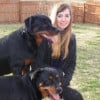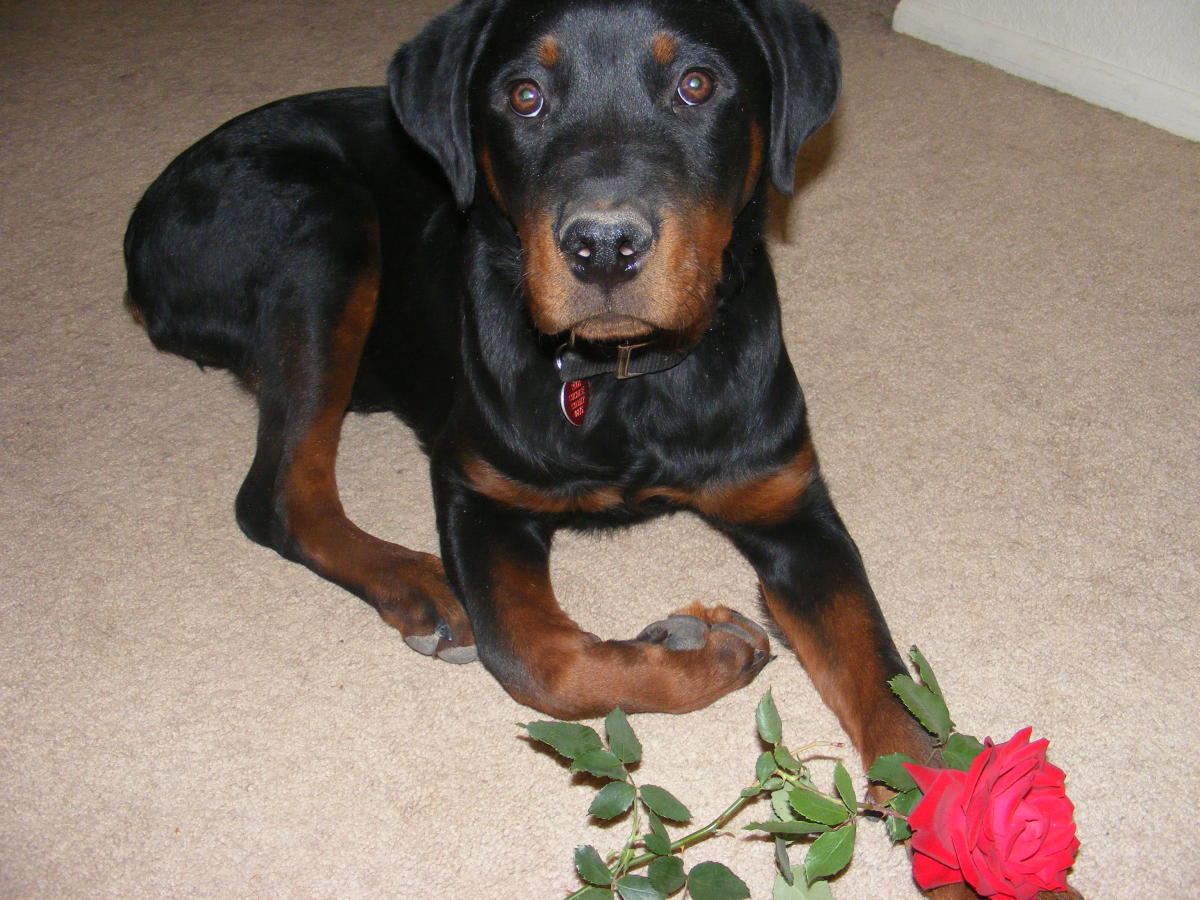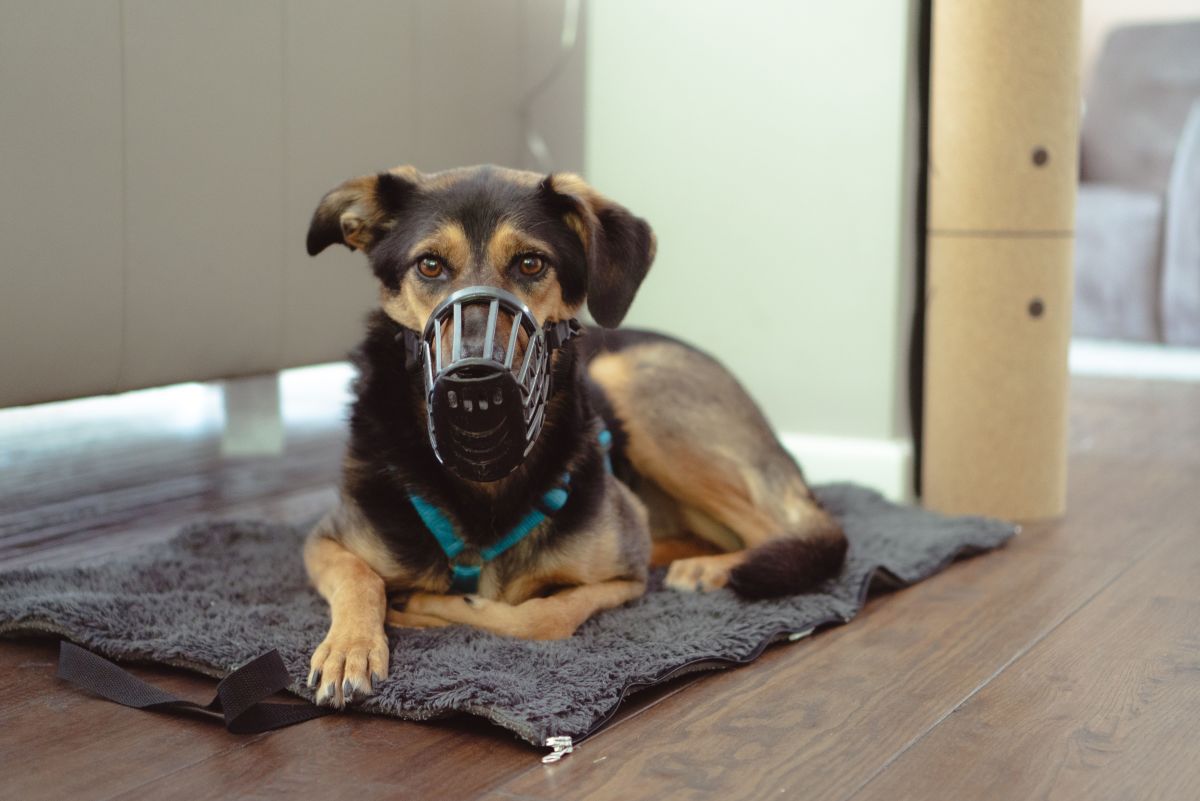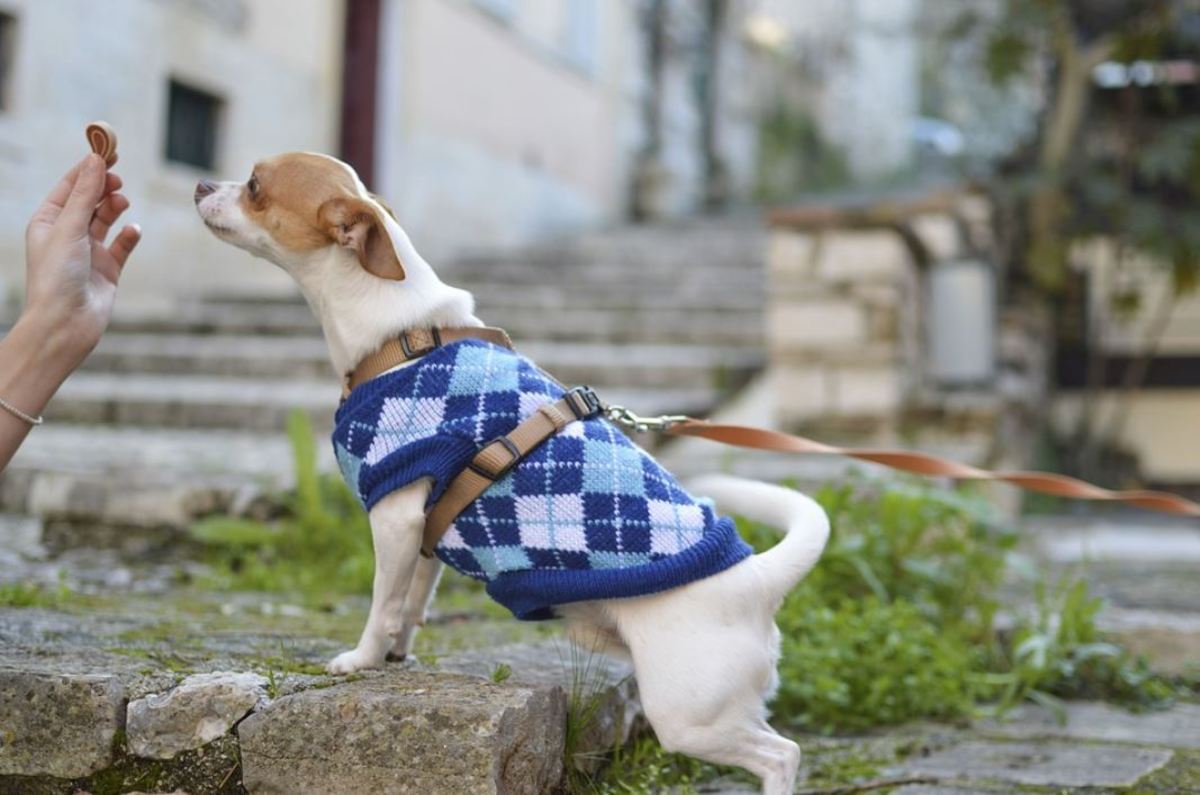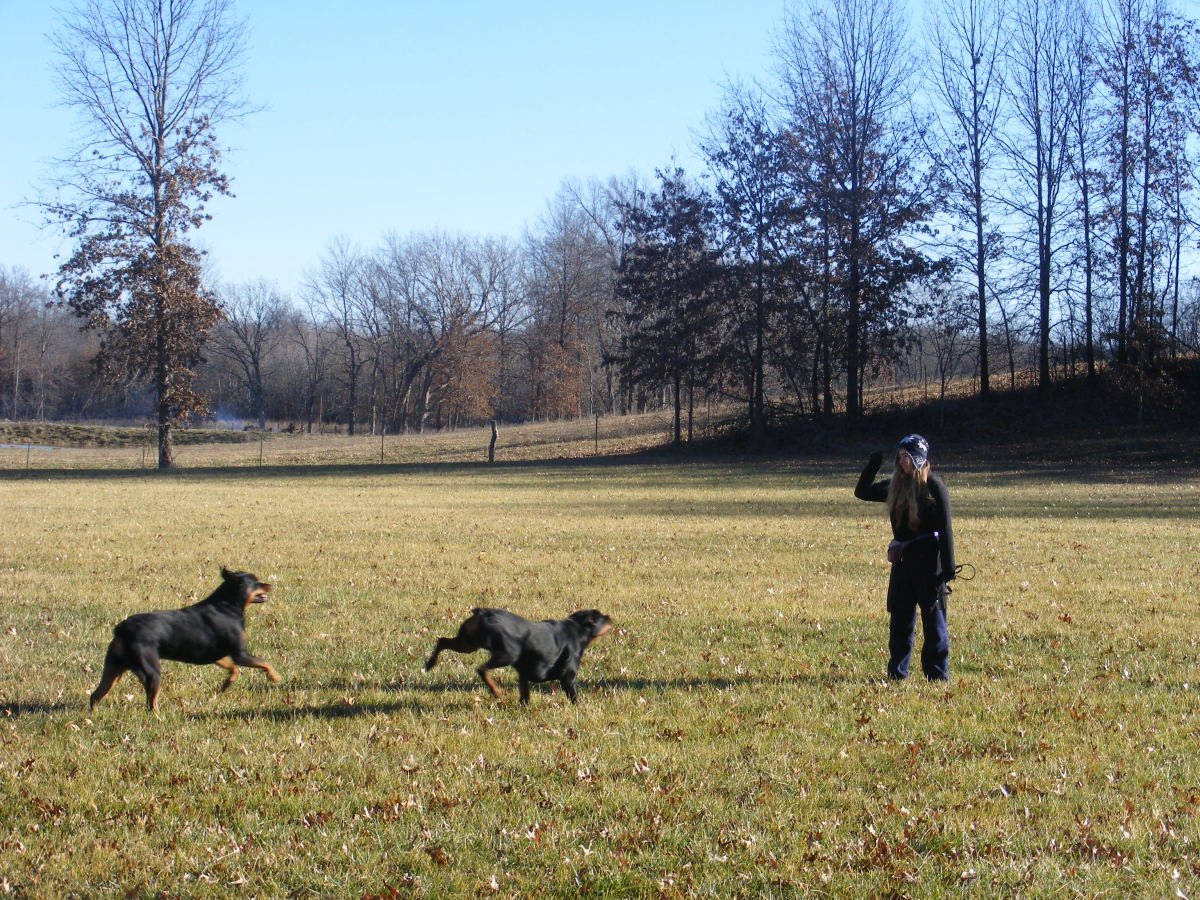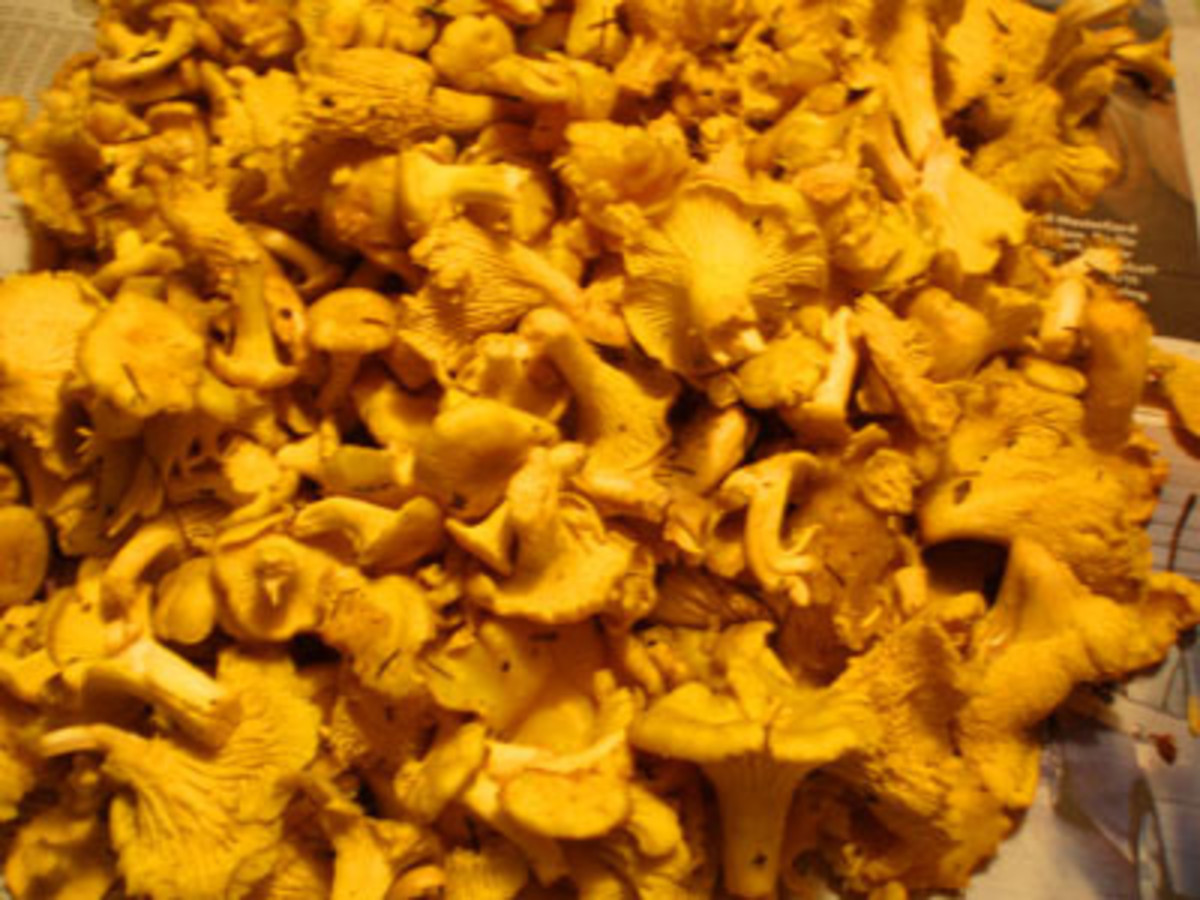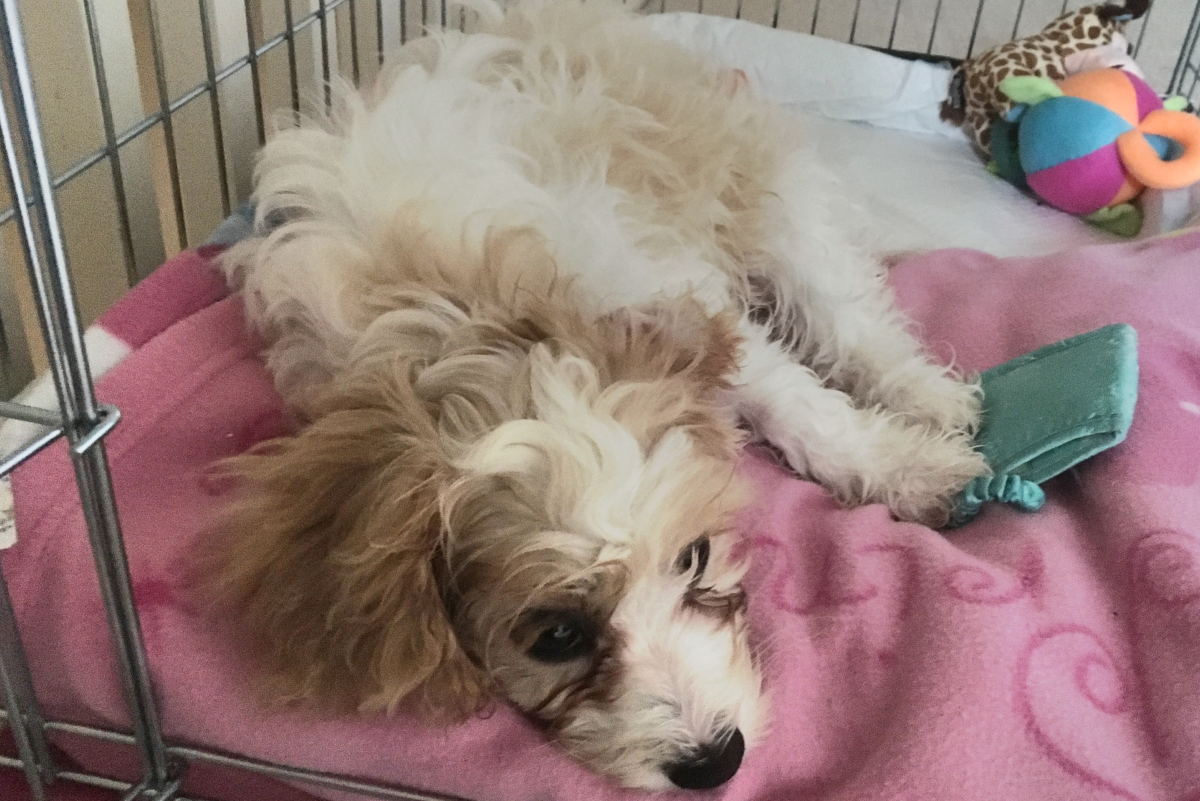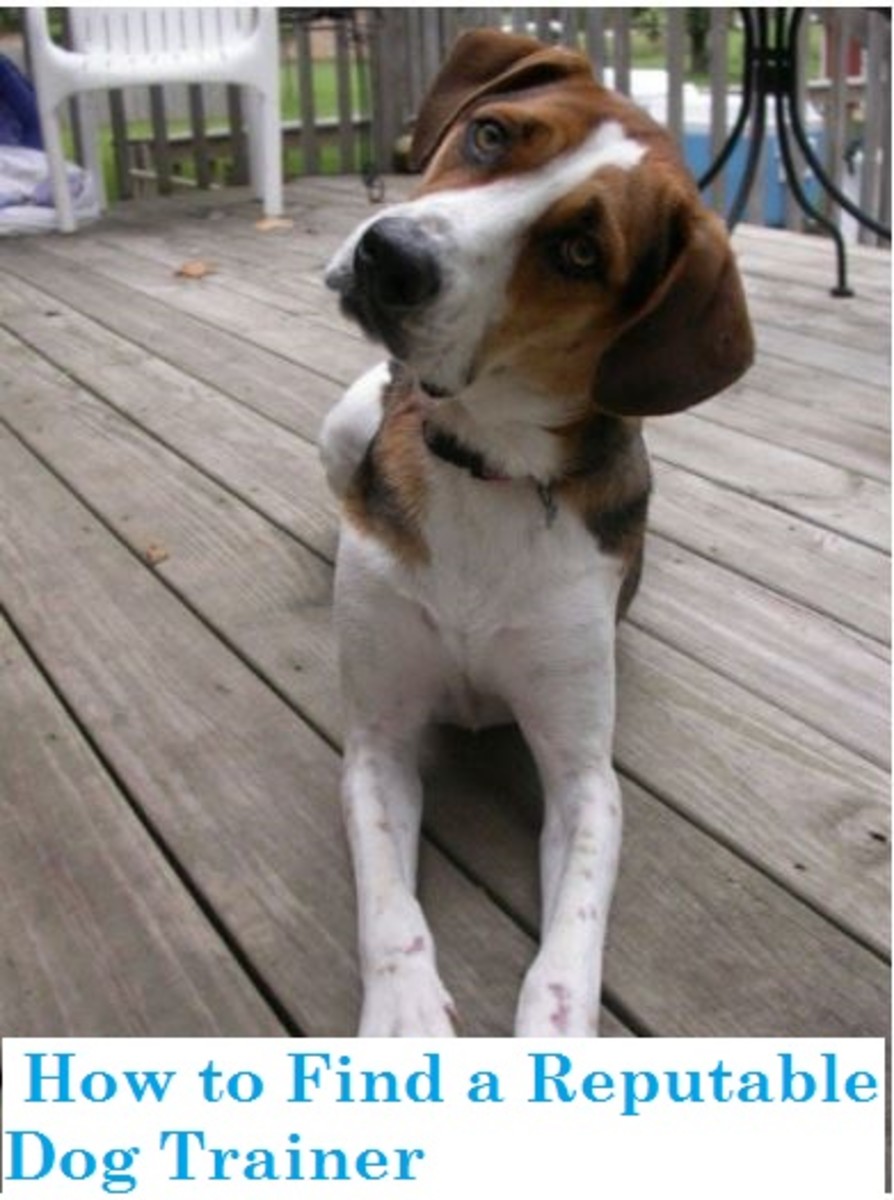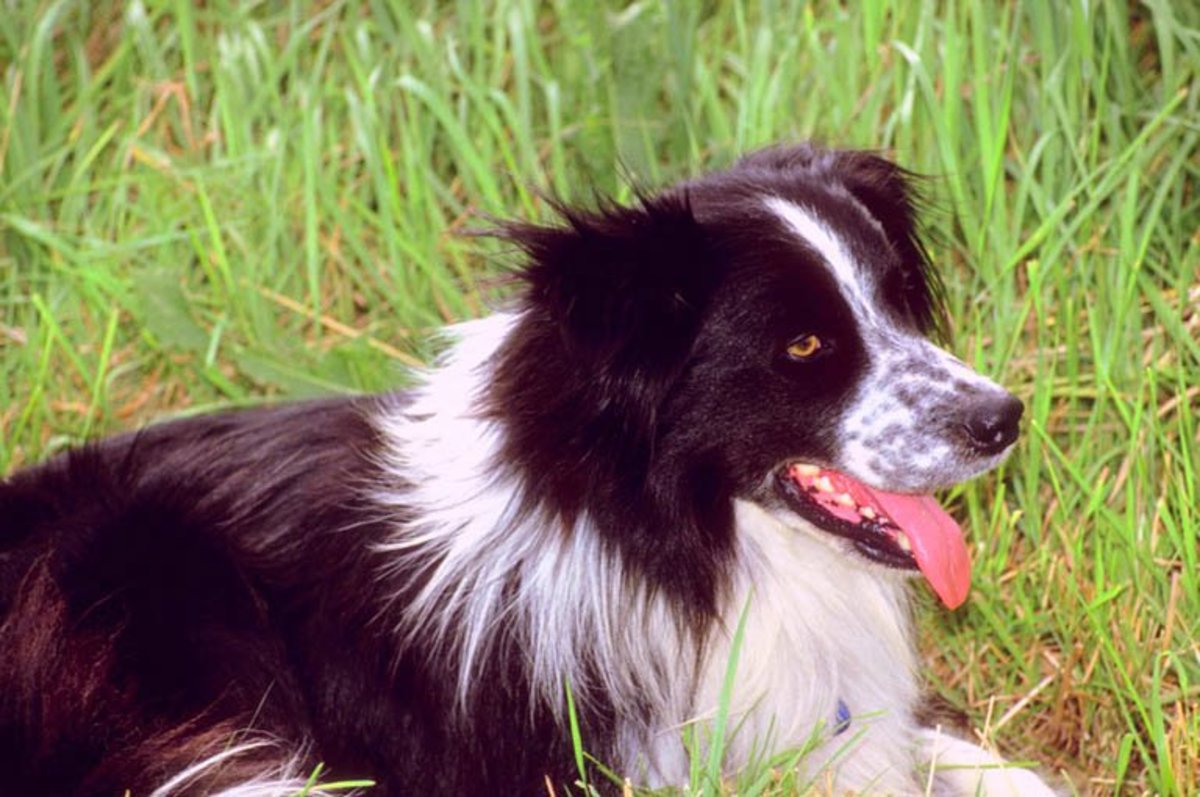How to Teach Your Dog to Spin Around
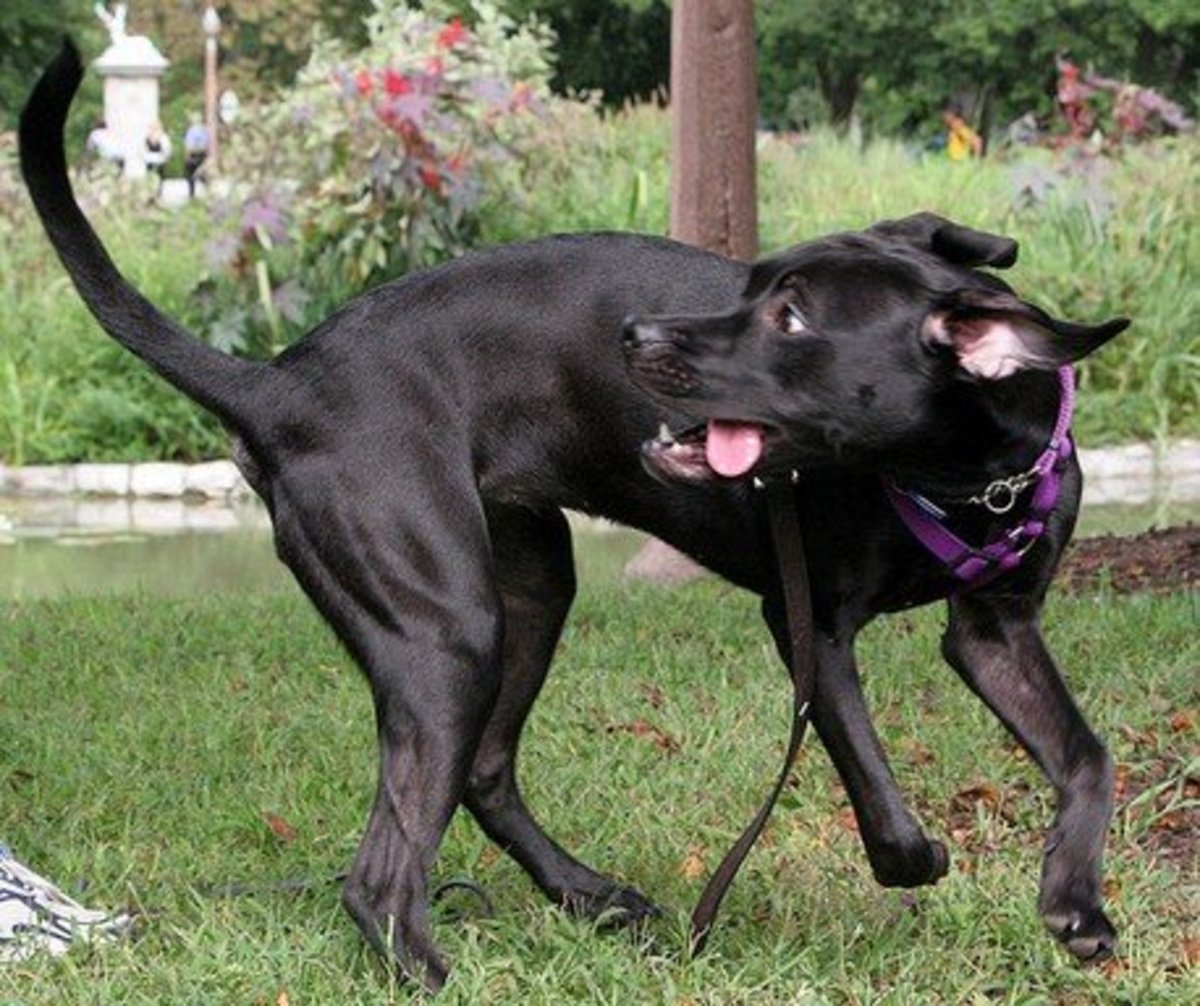
Generally, dogs used to luring are more likely to follow your hands and learn to spin more quickly.
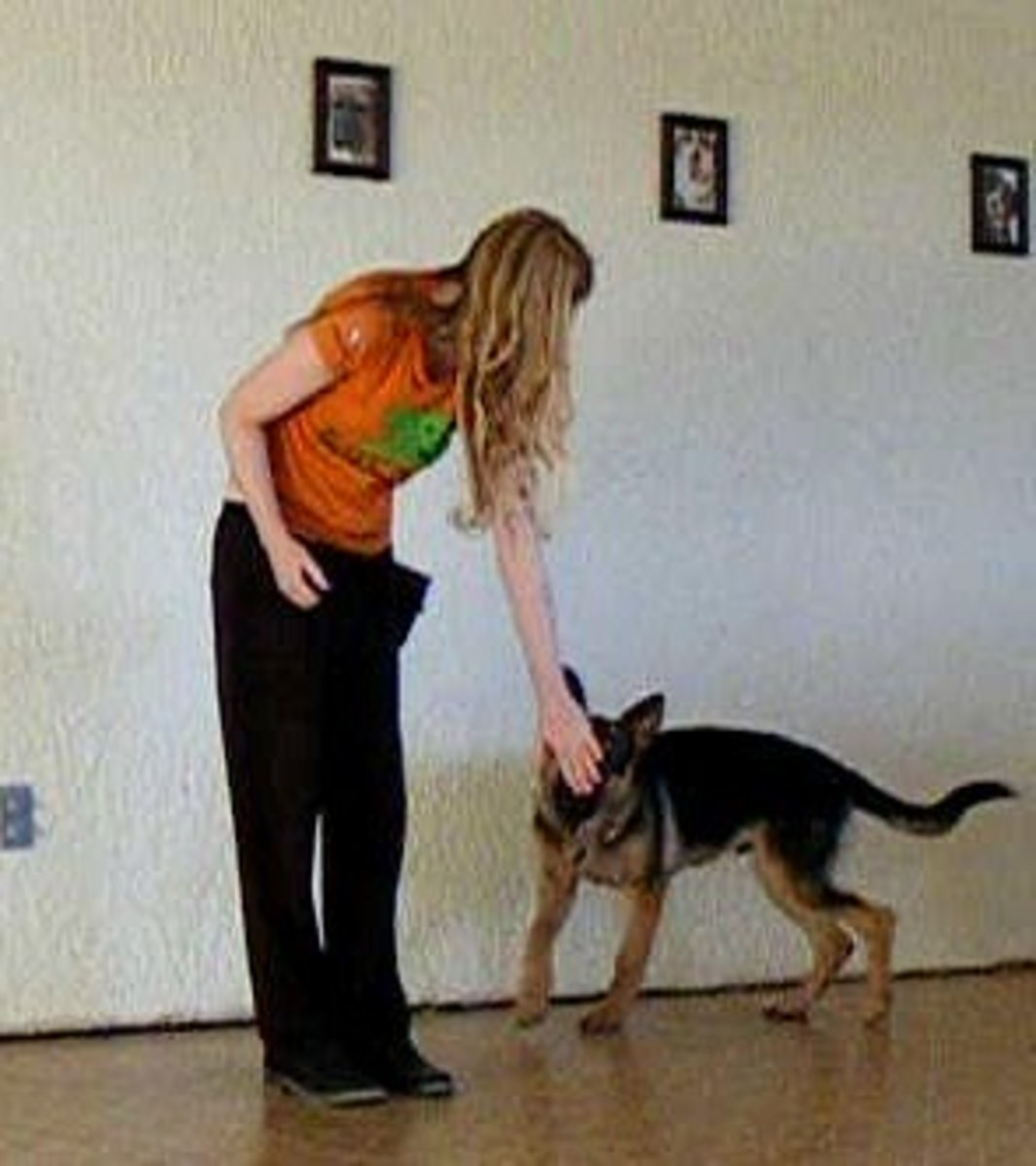
Why Train Your Dog to Spin Around?
Teaching a dog to spin around is not that difficult. After all, this behavior is often already practiced by your dog naturally in different instances. For instance, your dog may spin around in a circle when he has an itchy bum or as puppy when he first discovers he has tail and chasing it can be fun. Some dogs may also spin around when they aroused or frustrated. Spinning, therefore, like a dog taking a bow, is a behavior that may already be in your dog's repertoire of behaviors. It's over all a natural movement that doesn't take certain muscles to strengthen as in training a dog to back up and it doesn't require a whole new knowledge and muscle memory as in other tricks.
However, dogs who are used to the training method of luring are at an advanced position. This means the dog is fluent in following treats as their noses become almost magnets. When your dog learns to follow treats with his nose reliably, teaching new tricks is a piece of cake. However, dogs who are not luring savvy, advance quickly as well once they feel motivated and go into operant mode.
Training your dog to spin around can be a cute trick you can teach to impress your friends, but many use it for their Canine Musical Freestyle competitions. This is a fun sport, but it is quite advanced and requires that your dog is well-versed in basic obedience and capable of staying by your side without wandering around the ring. It is very rewarding and fun though and it will increase the dog and owner bond since you work as a team. A couple of summers ago, I started teaching Canine Musical Freestyle classes and they were always fun and most clients were always eager to come and learn.
Multiple dogs spinning at once!
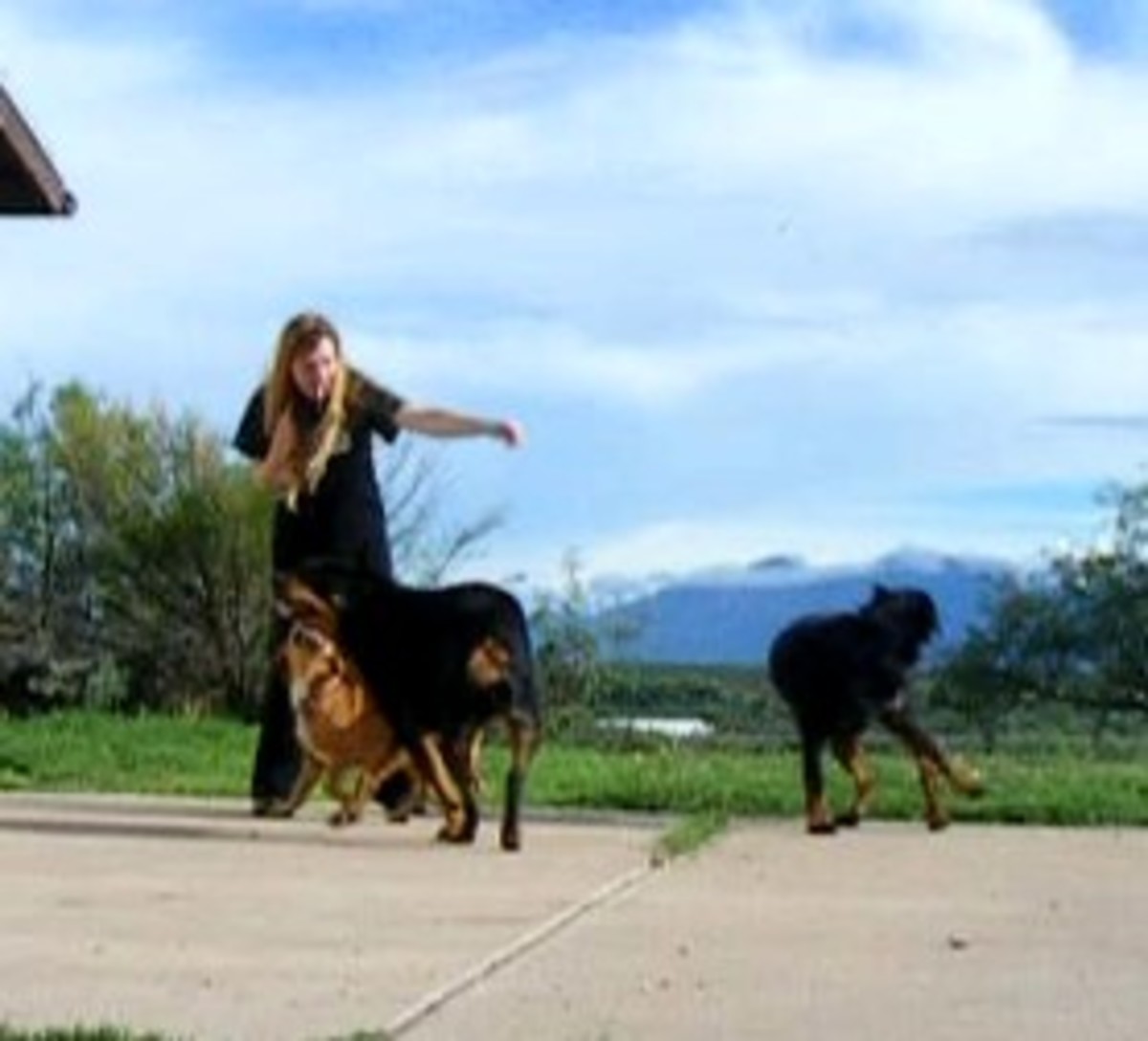
How to Train a Dog to Spin Around
In order to train your dog to spin, you'll need some high-value dog treats. Many dogs won't be too eager to work for kibble. Kibble also takes time to chew and many dogs end up choking on it if they are moving a lot during training. Rather, look for soft, bite sized treats you can delivery quickly and your dog can gulp down one after another with no problems. A treat bag is also helpful, so you won't have to fumble around a plastic bag or paper bag all the time. Choose one you can clip to your belt or pants so you are hands free. What if your dog is not that food motivated? Then you can use his favorite toy as a lure. Next follow these following directions and use the toy instead of food if your dog prefers toys.
- Hold your treat between your thumb and index finger allowing it to protrude so your dog can smell it.
- Once your dog is interested in the treat, draw an imaginary circle with it. Your dog should follow the treat just like a fish follows a lure.
- Once the circle is complete, mark the behavior with a clicker or "yes" and immediately give the treat.
- Repeat several times until your dog becomes fluent.
- Once your dog gets better, introduce the verbal cue which in this case can be "spin" followed by the movement of your hand. With time, you should also fade the treat, no longer making it visible meaning your dog sees it only after doing the trick. If you fail to do this, you may end up bribing your dog instead of luring.
- As time goes by, you can make the hand movement less and less evident having your dog rely only on the word command. Some though, like to have the dog respond exclusively to the hand movement and never introduce a verbal command. This is good if you want your performance to be silent with the audience hearing only the music without getting distracted by you giving out commands left and right.
In the video below you'll see me using mostly hand movements. From a dog's perspective body movements are often much more salient than verbal commands. My two Rottweilers have done this for years, but the hound mix is a novice to this, but you can see he is getting pretty fluent too. All dogs are off leash, because when training Freestyle I like the dogs to be free-willing, choosing voluntarily to be trained on their own because it's fun and rewarding. This helps develop a stronger bond, as your dog chooses to engage with you rather than with other outdoor stimuli. This is particularly a big improvement for the hound mix, as all he wanted to do before was chase the rabbits who live under our shrubs! Have fun training your dogs to spin!
Alexadry© All rights reserved, do not copy.
Petra, Kaiser and our hound guest spinning!
For further reading
- The 3D's of Dog Training: Distance, Duration and Dis...
If you really want to kick your dog's training up a notch, you may be interested in learning more about the 3D's of dog training. Learn how distance, distraction and duration can help. - Canine Musical Freestyle: Training Your Dog to Take ...
Trying to train your dog to take a bow for a canine musical freestyle event? Watch my video and learn some insider secrets of the trade. Learn how to train your dog to take a bow through 3 different training techniques. - How to Teach Your Dog to Play the Piano
Training your dog to play the piano is an amazing trick that will certainly draw an audience. Learn how I teach it to my dogs, my foster dogs and dogs of my clients.
